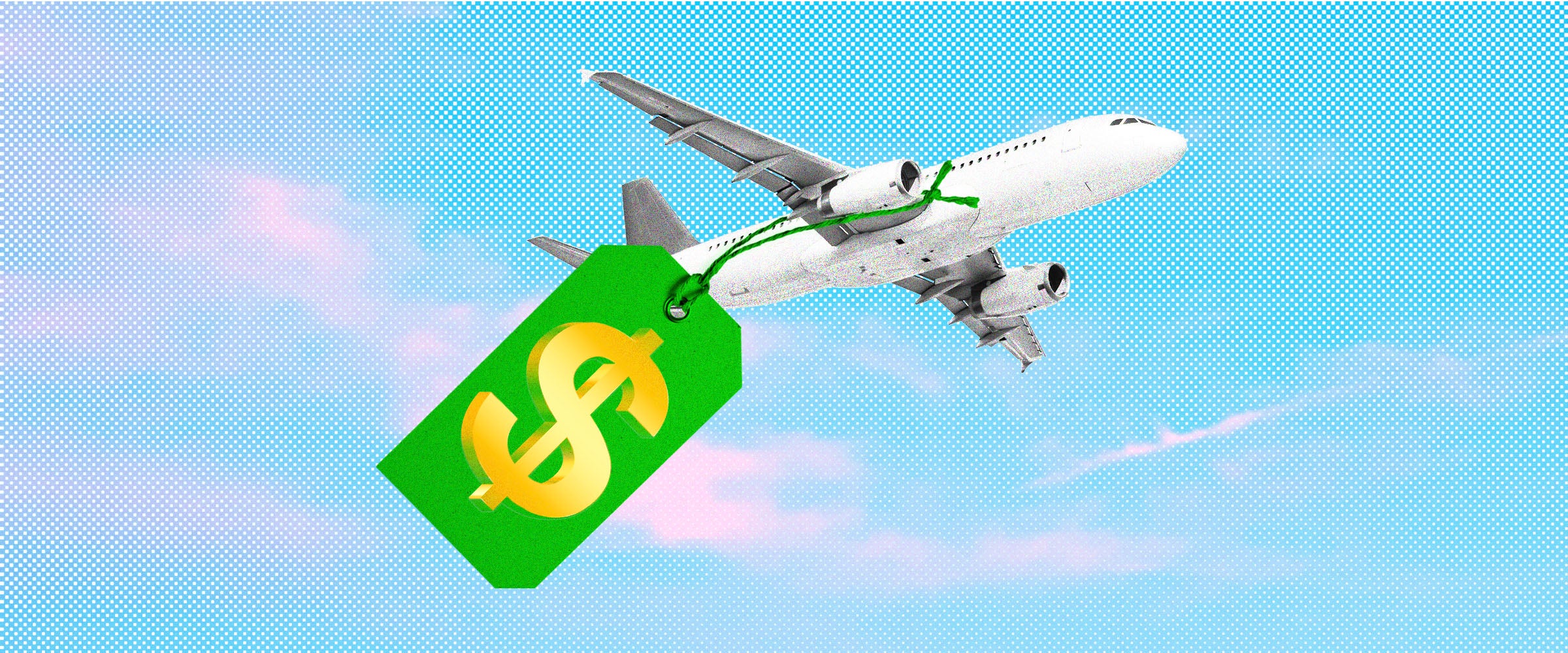Flying has got to be a ripoff, right? I mean, when you think of big evil corporations, airlines are definitely up there, especially when you consider things like baggage fees, the way they keep sacrificing leg room to squeeze in more seats and the simple fact that nowadays it costs hundreds of dollars to go just about anywhere. When you look at the news that the industry as a whole raked in $38 billion in profit in 2017, you’ve got to figure that anyone who flies is getting taken advantage of, surely?
And yet, when you look up how much profit airlines actually take in per ticket, it’s usually only about ten to 20 bucks, which sounds… suspiciously low (although given the historical volatility of the industry, this narrow profit does makes sense). So where the hell does all that money from a plane ticket go?
Let’s start with a pretty popular flight: New York to L.A., which, on average, costs about $326. According to a study in the Wall Street Journal, the profit margin on a similarly priced flight was about 20 bucks, so we’ll just use that number. Unsurprisingly, there are also a whole mess of taxes in that airline ticket too, and they total up to about $34.00 according to this enormously informative video by Wendover Productions:
Once you take out the taxes and profit, that leaves us with $272 left of our $326 ticket. Fortunately, the aviation information organization Airlines for America (also known as “A4A”) breaks down the passenger airline cost index (also known as “PACI”) on its site, which is what is costs for an airline to fly you before taxes. According to them, most of this cost is personnel — nearly a third of it. This isn’t just the flight attendants who have to put up with your stupid questions and your kid’s shitty diapers — it also accounts for pilots, maintenance crews, accountants, administrators and everyone else who is required to make that airline function. At 32.5 percent of your PACI, this accounts for about $88 of your ticket price.
Next is fuel, which A4A puts at 20.1 percent of the PACI. This comes out to just under $55 of that $326. Obviously fuel costs can vary from week to week, but according to that same Wendover Productions video, in 2016, airlines paid an average of $1.24 per gallon. They also break down that, while an airbus has a paltry fuel efficiency of just .67 miles per gallon, when you consider the fact that the airbus holds 154 people, the per person fuel efficiency of the airbus is an astounding 104.7 miles per gallon, which is more than double even the most fuel efficient of cars.
While we’re comparing cars to airplanes, Wendover also points out that if you were to drive the distance from NYC to L.A., it would cost you about $340 in fuel, plus another $300 in maintenance and depreciation of your car. On an airplane, depreciation is a whole different ball game: While some planes can last up to 30 years, Wendover explains that the lifespan for a plane isn’t determined by its flying hours, but instead by a “flight cycle,” which basically means one flight, since every time it’s pressurized, microscopic cracks form in the plane. (Don’t worry about that though — flying is still the safest way to travel, statistically speaking.)
So say an $107 million airbus is going to last 25 years, that’s about $4 million per year on one plane alone. This comes out to just seven percent of your PACI, or $19. Given their age and the fact that safety is of the utmost importance, maintenance costs are a part of your ticket too, but surprisingly it’s only about $3.25. So either these things are built really well, or they’re skimping on the repairs (kidding — it’s the former).
Weirdly, more money is spent on those shitty peanuts then on maintenance, as food averages about 1.8 percent ($5) of the passenger cost. Landing fees cost about the same as that at 1.9 percent, and there are also a few other expenses that are on the low end, like office supplies ($1.63), advertising ($1.63), communications for boarding ($2.17), insurance ($0.54) and commissions for third-party sellers ($2.45).
We’re not done yet though — there’s still a third of that PACI left. Terminal space rentals account for $11; professional services like lawyer fees or funded studies by academics are $23 of your ticket; $35 is for what they call “transport-related expenses,” which includes the cost of an airline running a gift shop or serving liquor; and finally there’s another $18.50 for a wide array of “other operating expenses,” such as losses from insurance recoveries and uncollectable debts.
Okay. Now that’s it.
In the immortal words of Richard Branson, discussing his venture into Virgin Airlines: “If you want to be a millionaire, start with a billion dollars and launch a new airline.”

